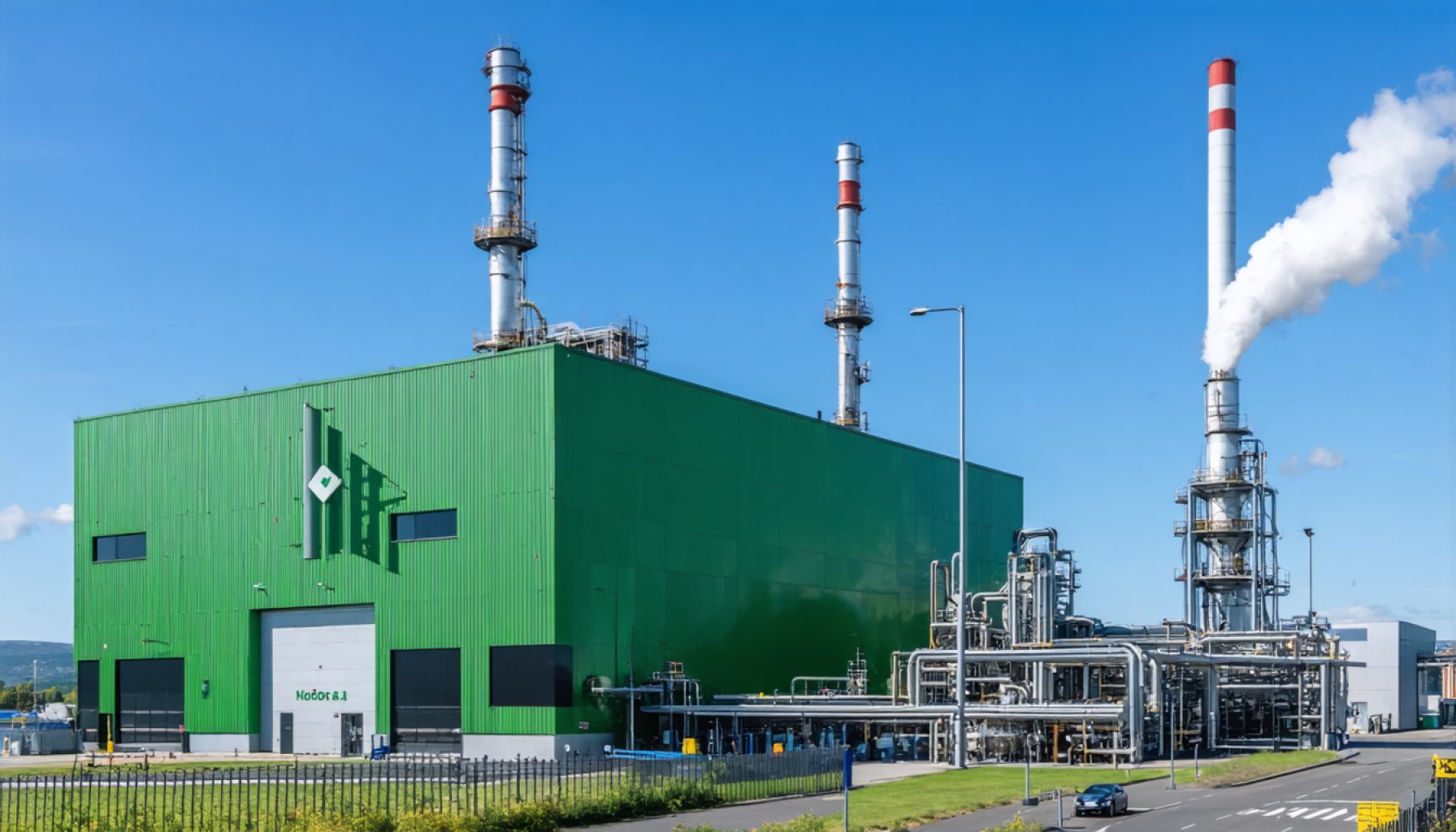- The MFE110 electrolyser, a pioneering green technology, has completed its initial assessment stages, marking progress in clean energy development in Belfast.
- In September, the electrolyser successfully passed the Factory Acceptance Test at CPH2, signaling its potential for future innovations.
- By December, the electrolyser’s Site Acceptance Test in Belfast confirmed its mechanical and electrical systems met engineering standards.
- Specialists from Arup and Lagan MEICA Limited are leading further examinations to ensure the electrolyser’s optimal functionality.
- Anticipation builds for the final assessment stage in the first half of 2025, which could revolutionize sustainable energy production.
- The progress with the MFE110 underscores Northern Ireland’s commitment to cleaner, sustainable energy through advanced hydrogen technology.
Beneath the overcast skies of Belfast, innovation hums quietly at Northern Ireland Water’s treatment site. The MFE110 electrolyser, a beacon of green technology, recently crossed a significant milestone. Sleek and robust, this cutting-edge machine completed its first stage of rigorous assessments, bringing the future of clean energy even closer.
In September, the MFE110 enthralled engineers at CPH2’s test site, passing its Factory Acceptance Test with flying colors. Afterward, its components whispered tales of potential as it underwent further scrutiny and optimization. By December, the electrolyser had journeyed to Belfast, where its next challenge awaited.
The initial Site Acceptance Test proved promising, showcasing the electrolyser’s intricate mechanical and electrical systems that align meticulously with engineering standards. Overseen by the specialists from Arup and facilitated by Lagan MEICA Limited, this milestone was more than a mere test; it was the first breath drawn by a new era in hydrogen technology.
Hopes now soar as Lagan MEICA Limited delves into the next layer of examinations, where the electrolyser’s inner workings will be probed deeper—each wire and control function calibrated to perfection. The anticipation builds toward the conclusive third stage in the first half of 2025. Once achieved, this will not only herald the operational deployment of MFE scaled technology but also mark a transformative moment in sustainable energy production.
As Belfast edges ever closer to harnessing hydrogen and oxygen through groundbreaking technology, the message is clear: the dawn of cleaner, greener energy is upon us, powered by relentless innovation and a commitment to a sustainable future.
The Hydrogen Revolution: How the MFE110 Electrolyser is Transforming Energy in Belfast
Unlocking hydrogen’s potential for a cleaner, sustainable energy future is no small task. The MFE110 electrolyser, used at Northern Ireland Water’s treatment site, is poised to be a game-changer. But what exactly does this mean for the clean energy industry? Let’s dive into the aspects of this groundbreaking technology, exploring its features, use cases, market outlook, and more.
How-To Steps & Life Hacks: Implementing Hydrogen Technology
1. Understand the Technology: Electrolysis uses electricity to split water into hydrogen and oxygen. The MFE110’s efficiency plays a key role in reducing costs and improving sustainability.
2. Integrate with Existing Systems: For a seamless transition, integrating electrolysers like the MFE110 with existing power grids and manufacturing systems is vital.
3. Optimize Energy Sources: Pair electrolysers with renewable energy sources, such as wind or solar, to produce truly green hydrogen without carbon emissions.
Real-World Use Cases
– Transportation: Hydrogen is a clean alternative fuel source, suitable for powering fuel-cell vehicles and public transportation systems.
– Industrial Applications: Industries can use hydrogen for refining processes, steel production, and ammonia synthesis, significantly reducing carbon footprints.
– Energy Storage: Surplus energy can be stored as hydrogen, offering a solution for grid stability and energy supply consistency.
Market Forecasts & Industry Trends
– Growing Market: According to a report by Allied Market Research, the global hydrogen generation market size was valued at $136.55 billion in 2022, and it is projected to reach $199.1 billion by 2028.
– Increasing Demand: The push for decarbonization is driving increased investment in hydrogen technologies, with an expected Compound Annual Growth Rate (CAGR) of 5.5%.
Reviews & Comparisons
– Competitive Edge: The MFE110 is noted for its robust performance and high efficiency compared to traditional electrolysers.
– Comparison: Similar systems, like proton exchange membrane (PEM) electrolysers, offer unique benefits. However, the durability and cost-effectiveness of the MFE110 make it a preferred choice in several applications.
Controversies & Limitations
– Production Costs: Initial costs remain high, but economies of scale and technological improvements are expected to reduce expenses over time.
– Infrastructure Challenges: Developing a robust hydrogen distribution network is pivotal, as it currently lacks the expansive reach of traditional fuels.
Features, Specs & Pricing
– High Efficiency: Integrates advanced control systems to maintain efficiency across varying scales of operation.
– Robust Design: Engineered to withstand rigorous demands, making it ideal for large-scale industrial applications.
Security & Sustainability
– Safety Measures: Designed with state-of-the-art safety features, minimizing risks associated with hydrogen handling.
– Sustainability Impact: By mitigating carbon emissions from traditional energy sources, the MFE110 aligns with global sustainability goals.
Insights & Predictions
– Future Outlook: Expect significant advancements in hydrogen storage and distribution, further enhancing the feasibility of hydrogen-fueled economies.
– Policy Support: Increased governmental policies and subsidies could accelerate hydrogen technology adoption globally.
Pros & Cons Overview
Pros:
– Environmentally friendly
– High efficiency and durability
– Potential for diverse applications
Cons:
– High initial investment
– Developing infrastructure
Actionable Recommendations
– Business Adoption: Companies should explore partnerships and incentives to integrate electrolysers into their energy systems.
– Policy Advocacy: Encouragement for supportive policies and incentives can facilitate infrastructure development and reduce initial costs.
– Community Education: Raising awareness about the benefits and potential of hydrogen energy will help build public support and drive industry growth.
The MFE110 electrolyser is a pioneering force in hydrogen technology, offering exciting prospects for a sustainable energy landscape. As businesses and governments look toward a net-zero future, leveraging such innovations becomes crucial.
For more insights on renewable technology, visit Arup, a leader in sustainable infrastructure development.


